1. Creepy Crawlers—Toxic Plastic and Hot Metal
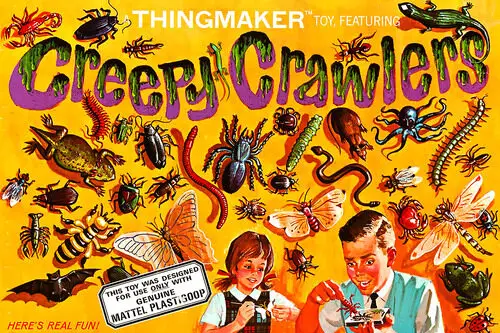
Creepy Crawlers were every kid’s dream—until you realized you were basically playing with a mini toxic waste site. The kit let kids pour a chemical goo called Plastigoop into metal molds, which were then heated on a sizzling hot plate to make rubbery bugs. The problem? That goo contained all kinds of questionable chemicals, and the heating process released toxic fumes. Not to mention, the metal molds could get hot enough to leave serious burns. Kids were supposed to use tongs to remove their creations, but let’s be real—many grabbed them with their hands instead says MSN.
Even worse, if you spilled the Plastigoop or touched it before it cooled, it could stick to your skin and cause burns. Mattel eventually reworked the kit to be safer, but in the ’60s, safety was more of a suggestion than a requirement. Plenty of kids ended up with burns, singed fingers, and exposure to fumes that no one should be breathing in. And yet, they kept playing because making slimy bugs was just that fun shares Go2Tutors.
2. The Gilbert U-238 Atomic Energy Lab—A Science Experiment Gone Wrong

This wasn’t just a chemistry set—it was a full-on radioactive experiment that somehow made it into kids’ hands. The Gilbert U-238 Atomic Energy Lab came with actual uranium samples and a working Geiger counter, letting kids play scientist with real nuclear material. It was meant to be educational, but considering uranium is, well, radioactive, it was also dangerously risky. Sure, the company claimed the radiation levels were low, but that didn’t stop concerned parents from wondering why their kids were playing with glowing rocks adds All That’s Interesting.
The set encouraged kids to handle the uranium and even conduct experiments that could create radioactive dust. If inhaled, that dust could settle in the lungs, potentially leading to long-term health issues. Thankfully, the set didn’t sell well—probably because even ’60s parents had a limit on what they’d let their kids mess with. It was pulled from shelves after just a few years, but the fact that it existed at all is pretty shocking.
3. Clackers—The Noisy Toy That Could Shatter in Your Face
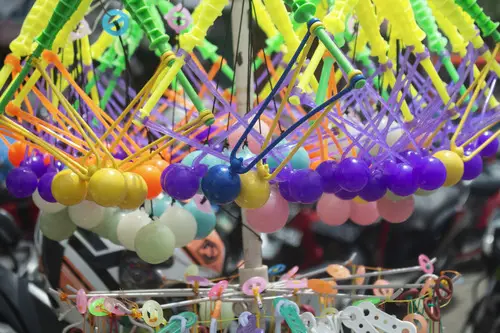
Clackers were basically two heavy acrylic balls attached to a string that kids would swing up and down, making a loud “clack” with every hit. They looked simple enough, but these things had a dark side. The balls were made from brittle plastic that had a nasty habit of shattering under pressure. That meant a hard hit could send plastic shards flying straight into a kid’s face. If you were lucky, you got away with just a few bruised knuckles, but if you were unlucky, you might end up with a nasty cut or even a piece of plastic in your eye says PCMag.
To make matters worse, Clackers required a lot of force to use properly. Kids would swing them wildly, often smacking themselves or others in the process. Some even tried to speed up the clacking, which only increased the chances of the plastic cracking apart. After too many injuries, they were eventually pulled from the market, but for a while, they were everywhere—causing chaos in playgrounds and living rooms alike.
4. Lawn Darts—A Backyard Game That Sent Kids to the ER

Lawn darts seemed harmless at first—just oversized darts meant for outdoor fun. But the problem was they were essentially small spears with pointed metal tips, and kids were, well, kids. Instead of gently tossing them toward a target, some would launch them high into the air, not thinking about where they’d land. A poorly aimed dart could come down hard enough to pierce the skull, and tragically, several children suffered serious injuries and even fatalities because of them.
Despite the obvious dangers, lawn darts were a staple at backyard gatherings. Parents often assumed kids would be careful, but it only took one bad throw for things to go south. Eventually, reports of severe injuries forced officials to take action. By the late ’80s, they were banned outright, but in the ’60s, they were just another example of a toy that probably shouldn’t have existed.
5. The Snacktime Cabbage Patch Kid—A Doll That Couldn’t Stop Eating
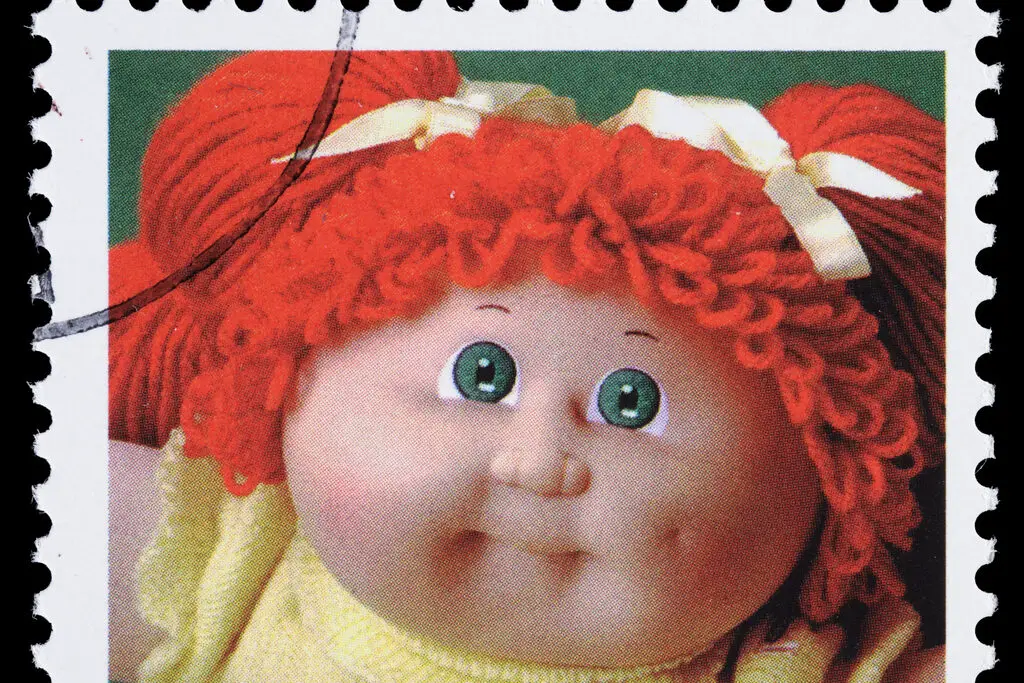
Most dolls were cute and cuddly, but the Snacktime Cabbage Patch Kid had an appetite that was downright terrifying. This doll featured moving plastic jaws that could “chew” toy food, but the mechanism didn’t have an off switch. If something got caught—like, say, a child’s hair or fingers—it wouldn’t stop. Kids quickly realized the hard way that once this doll started chomping, it wouldn’t let go.
Stories started popping up about kids getting their fingers painfully stuck or their hair pulled into the doll’s mouth. Some parents had to take scissors to their child’s hair to get them free. It didn’t take long for the doll to be pulled from shelves, but not before plenty of kids got an unexpected and painful lesson in why toys with moving parts can be a bad idea.
6. The Austin Magic Pistol—A Toy Gun That Fired Explosive Rounds
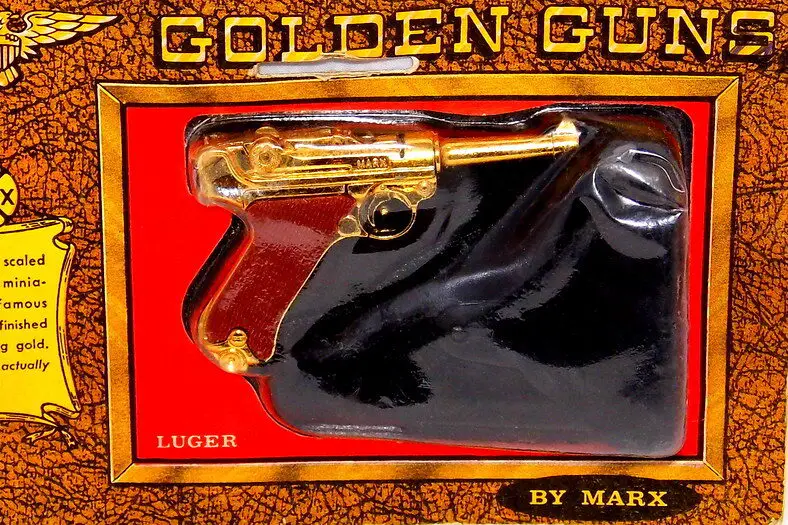
If the name didn’t tip you off, the Austin Magic Pistol was more than just a regular toy gun. It used calcium carbide pellets that, when mixed with water, created an explosive gas. Pulling the trigger ignited the gas, sending plastic balls flying at high speeds. In other words, it was a literal handheld cannon being marketed to children. The force was strong enough to leave bruises, break windows, and even start fires.
Parents quickly realized this wasn’t just a fun little toy—it was a disaster waiting to happen. Kids could easily misuse it, and even when used correctly, it was unpredictable. The pistol was eventually discontinued, but the fact that it made it onto toy shelves at all is baffling. It’s one of those ’60s toys that proves common sense wasn’t always a top priority.
7. Super Elastic Bubble Plastic—Toxic Fumes in Every Bubble
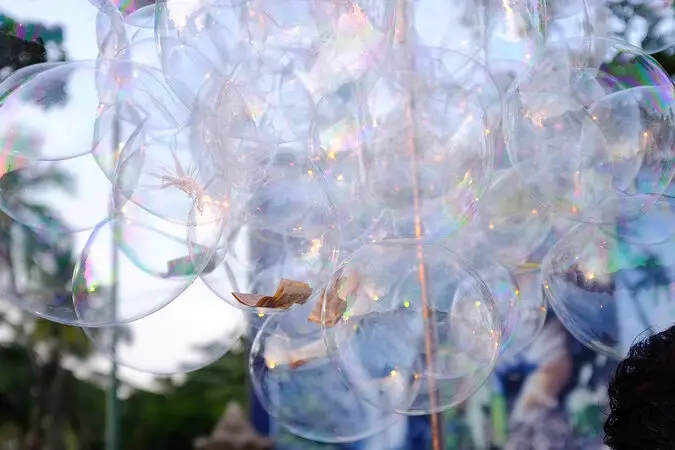
Blowing bubbles should be a safe and simple activity, but Super Elastic Bubble Plastic took it to a new, and not-so-safe, level. Instead of soapy water, this toy used a chemical goop made from polyvinyl acetate mixed with acetone. Kids would squeeze it out of a tube onto a straw, then blow to create thick, plastic-like bubbles. The problem? That acetone-heavy formula released toxic fumes that kids were inhaling with every breath.
The smell alone was enough to make some kids dizzy, and prolonged exposure could cause headaches or nausea. The worst part was that no one thought much of it at the time—after all, it was just a fun way to make bubbles. But as people became more aware of the dangers of inhaling volatile chemicals, the product quietly disappeared. It’s one of those toys that probably seemed harmless in the moment but left kids unknowingly breathing in some nasty stuff.
8. Moon Shoes—Trampolines for Your Feet (and a Trip to the ER)
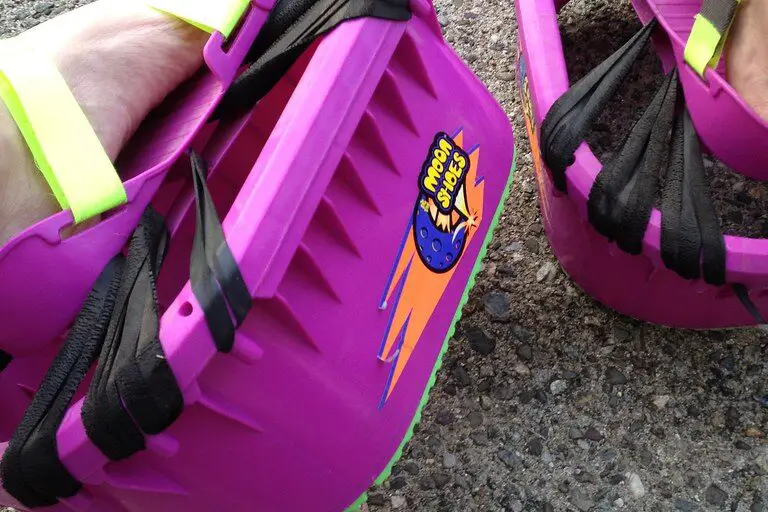
Moon Shoes promised kids the chance to experience low-gravity bouncing right in their backyard. These mini-trampolines strapped onto kids’ feet with rubber bands that stretched and snapped as they jumped. The problem? Those rubber bands weren’t always the most reliable. Some would break mid-jump, sending kids tumbling to the ground. Others would snap and whip back painfully against their legs.
Even when they worked as intended, they were wobbly and hard to control. Many kids ended up with sprained ankles, twisted knees, and the occasional broken wrist from falling the wrong way. Moon Shoes stuck around in different versions over the years, but the ’60s models were particularly risky. They were yet another example of how toy companies loved the idea of danger disguised as fun.
9. Slip ‘N Slide—Fun Until You Hit the Ground Wrong

A Slip ‘N Slide on a hot summer day seemed like the perfect way to cool off, but it wasn’t always the safest backyard activity. The concept was simple: unroll a long plastic sheet, spray it down with water, and slide across at high speeds. The problem? That thin layer of plastic didn’t provide much cushioning, and if the ground underneath wasn’t perfectly soft, kids were in for a rough landing. Rocks, tree roots, or even just hard-packed dirt could turn a fun slide into a painful experience.
Even worse, if someone slid headfirst and hit an unexpected bump, they could end up with whiplash or even a concussion. And heaven help you if an older sibling decided to run and dive at full speed—collisions were inevitable. Kids would sometimes even overshoot the end of the slide and skid across the grass or pavement. While Slip ‘N Slides are still around today, the older versions lacked the safety measures that later models added, making them a lot riskier than they seemed.
10. Water Wiggle—An Unpredictable Thrashing Hose
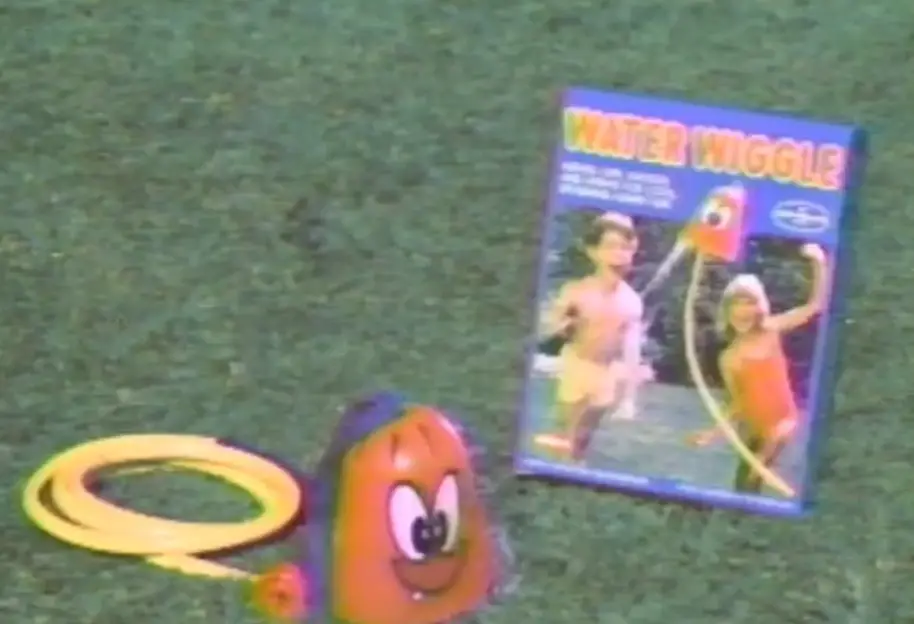
Water Wiggle looked like harmless fun—just attach it to a garden hose, and it would spray water in random directions. But the problem was that it could also whip around uncontrollably, hitting kids in the face or wrapping around their legs. Worse, if the toy’s cap came off, the metal nozzle inside became a dangerous projectile. Tragically, at least one child lost their life when the nozzle got stuck in their mouth due to the extreme water pressure.
Many kids who played with Water Wiggle just ended up with some bumps and bruises, but that unpredictability made it a little too dangerous. If you weren’t paying attention, it could suddenly swing around and smack you in the eye. It was eventually pulled from the market, but for a while, it was just another example of how ’60s toys often came with unexpected hazards.
11. The Sixfinger—A Spy Toy That Shot Dangerous Projectiles
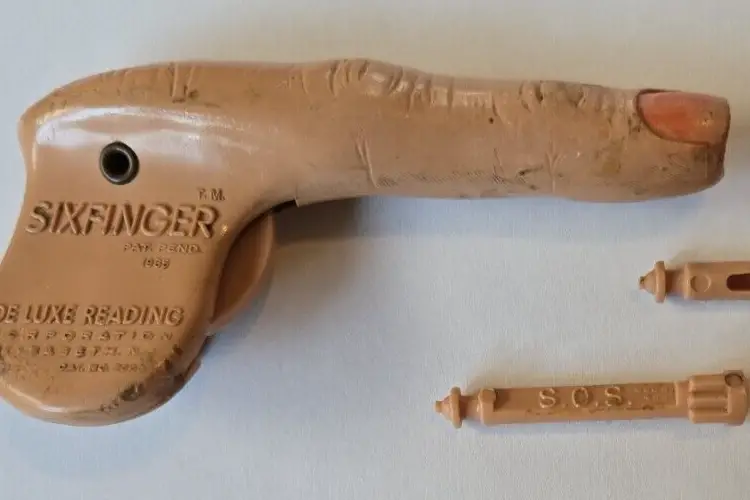
The Sixfinger was a toy straight out of a secret agent’s arsenal—except it was designed for kids. It was a fake extra “finger” that attached to a child’s hand and functioned as a mini weapon. With the press of a button, it could fire tiny plastic bullets, a small dart, or even a little explosive cap. The toy advertised itself as being “more than a finger—it’s a gun!” which tells you everything you need to know about safety standards at the time.
Kids would aim it at their friends, unaware that even small projectiles could cause serious eye injuries. The darts and bullets were lightweight, but with enough force, they could still hurt. It also wasn’t uncommon for kids to get their fingers pinched in the toy’s spring-loaded mechanism. The Sixfinger was eventually forgotten as safer toys took over, but it remains a classic example of how toy companies once saw nothing wrong with arming kids with tiny weapons.
12. The Atom Bomb Toy—A Dangerous Game of Pretend
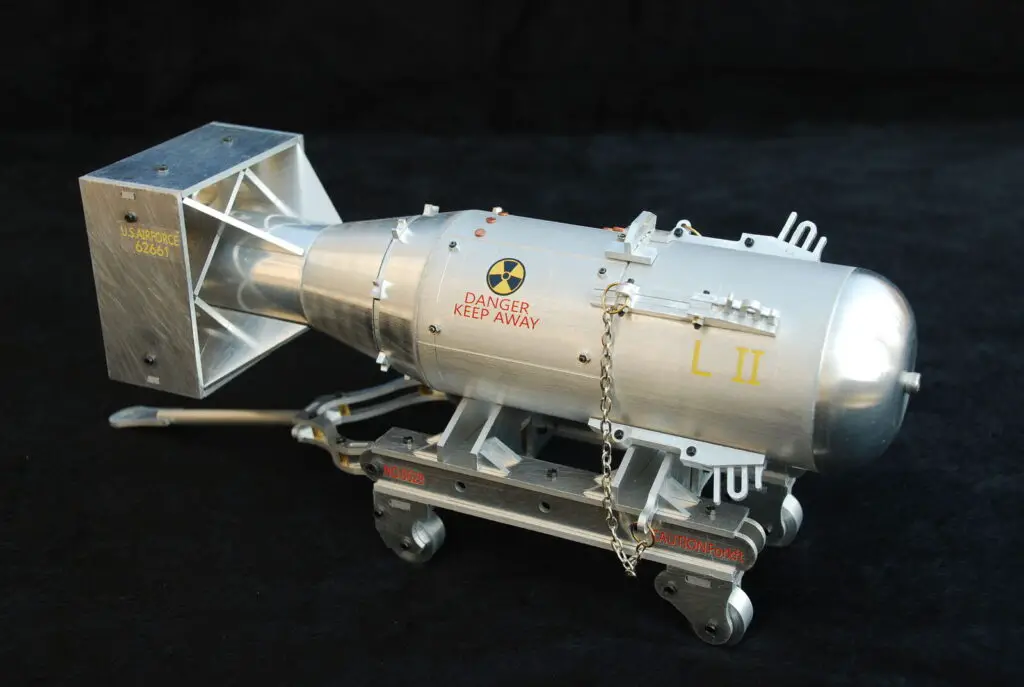
In a time when the Cold War was at its peak, some toy manufacturers thought it would be a good idea to capitalize on the fear of nuclear war by creating an “Atom Bomb” toy. This toy was a mini version of an atomic bomb, often designed with colorful buttons and a countdown timer to mimic the real thing. While it was intended to be a “pretend” game of global power and defense, the idea of kids playing with a toy based on such a terrifying reality was both inappropriate and reckless.
The most concerning part of the Atom Bomb toy wasn’t just the concept, but the fact that it often included small pieces that could easily be swallowed, posing a choking hazard. Even without that, the psychological implications were troubling—putting children in the position of “pretending” to be a part of a nuclear arms race could hardly be called innocent play. The toy was eventually pulled from the market, but for a while, it highlighted how the intense political climate of the ’60s found its way into toys—sometimes in the most bizarre and dangerous ways.
